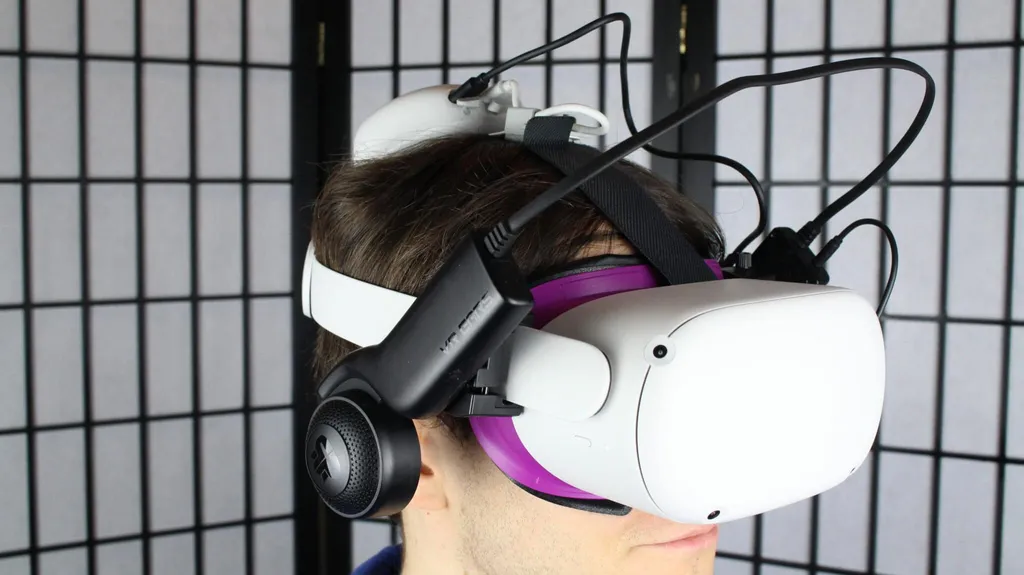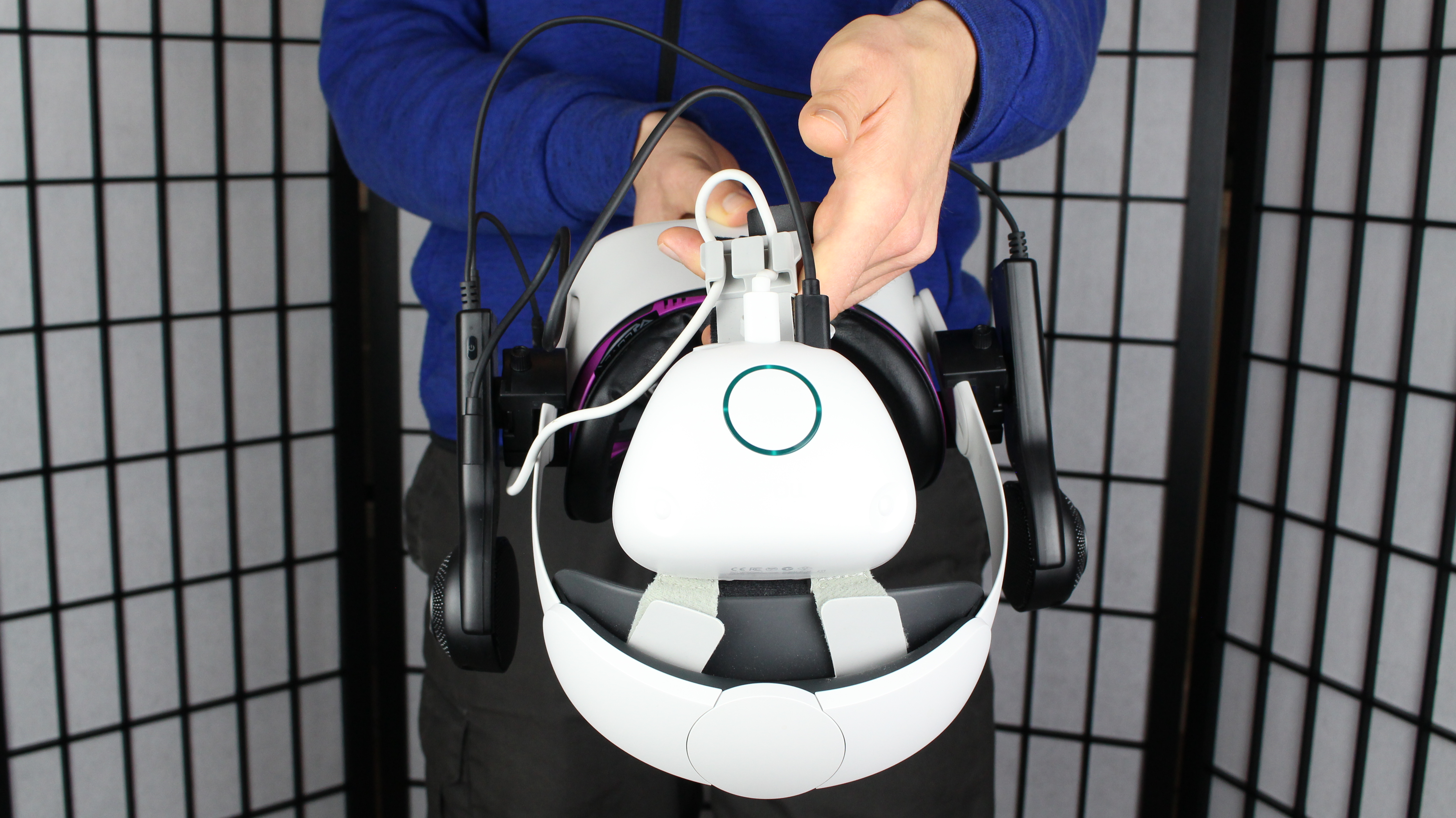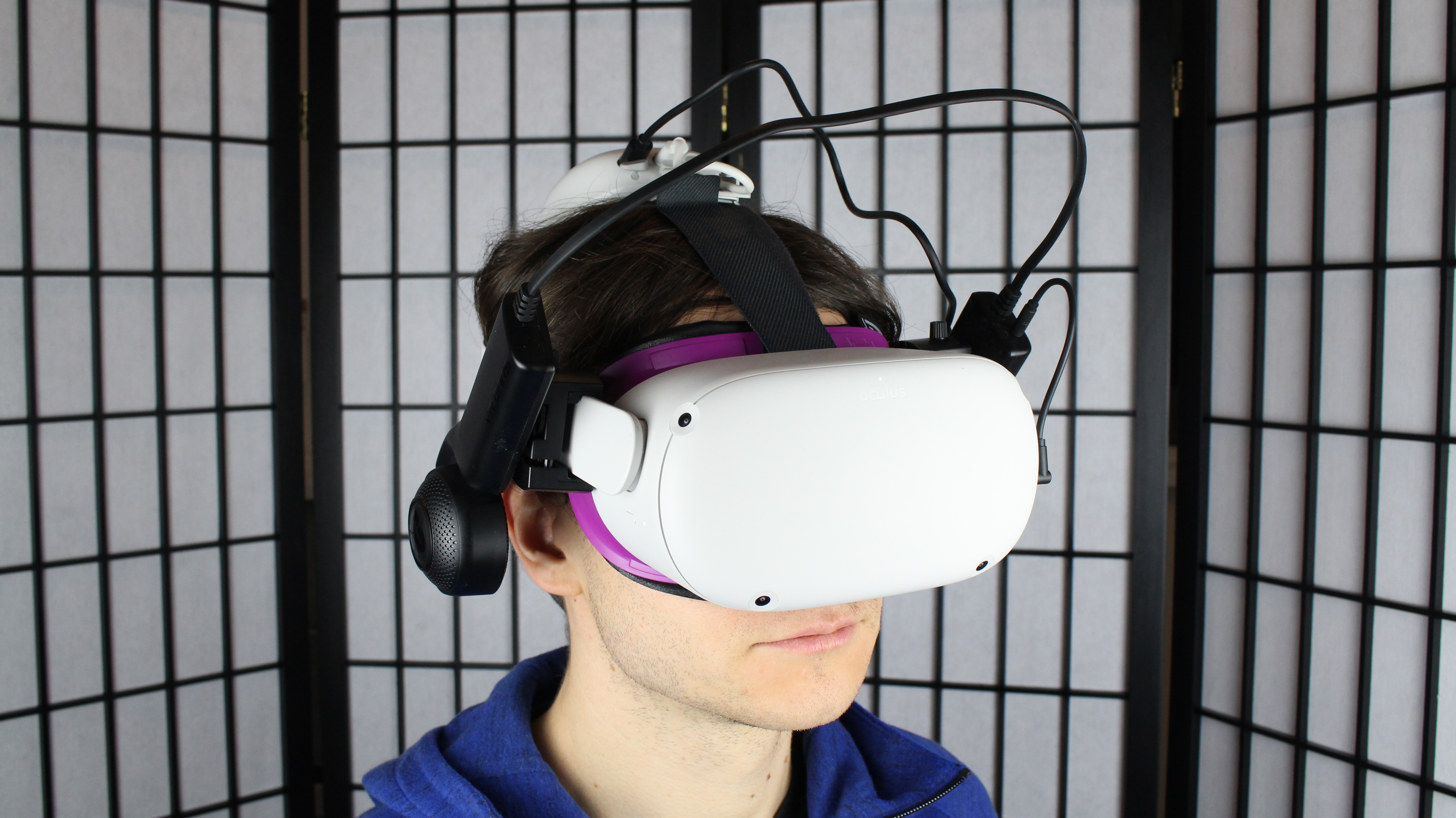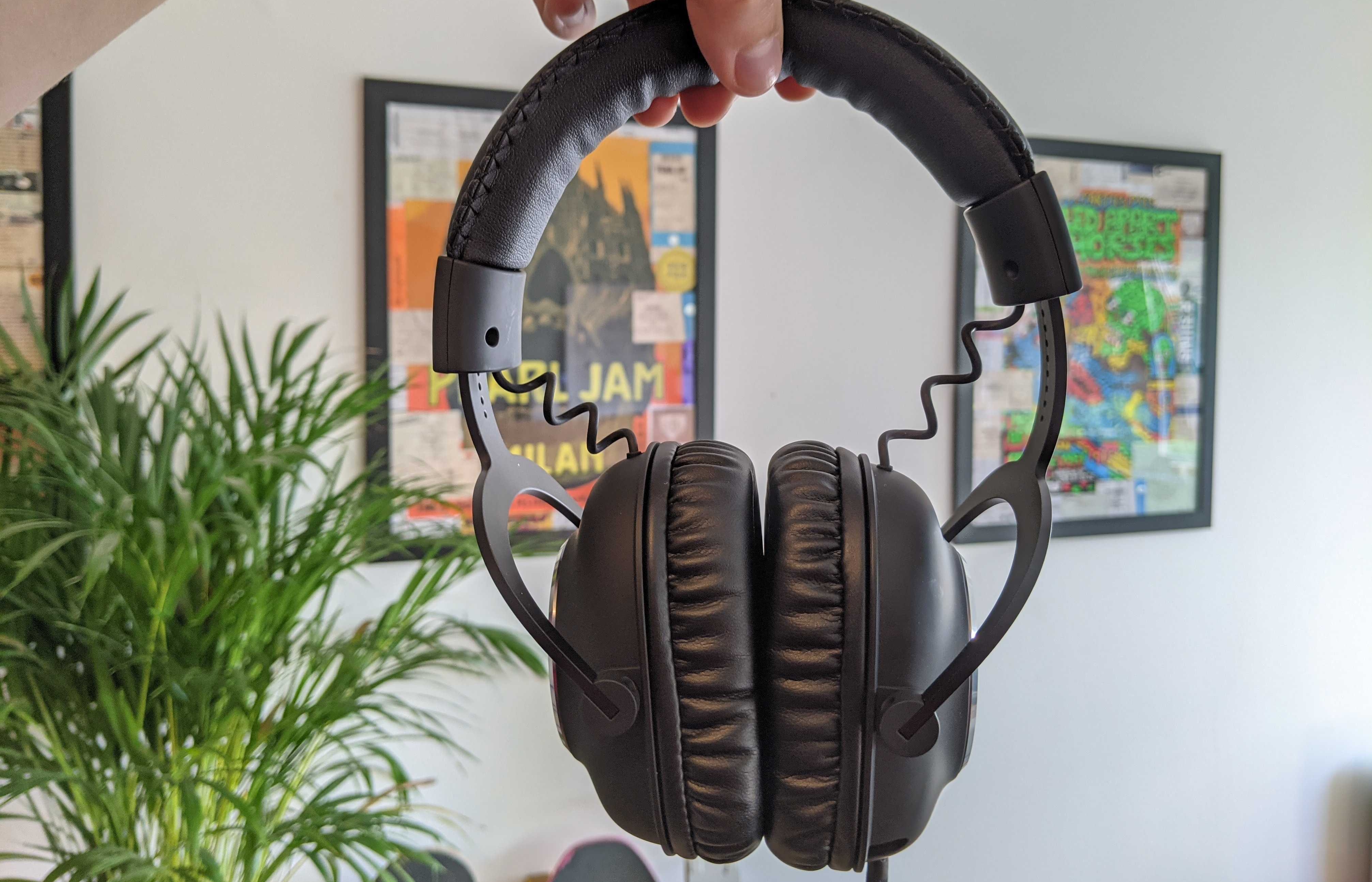Rebuff Reality’s VR Ears offer clear sound and versatility, but they’re not quite as easy a sell as the VR Power. Read on for our VR Ears review.
Rebuff Reality really impressed us with both iterations of its VR Power battery extender for the Quest and Quest 2. The device was well-made, added extra comfort to the headsets, and did what it said on the tin by extending the life of your device by a fair few hours.
The company’s long-awaited VR Ears are a similarly performant product, with some added complications.
The VR Ears are essentially off-ear speakers you can attach to most major VR headsets. Think about the integrated audio solution in the Valve Index, just for other devices. They feature a pair of headphones tethered together with a wire, an audio jack to plug them in and even wired USB-C charging that lets you plug directly into the VR Power when the battery is low (though, to be clear, charging during use is optional). They come ready to use with a Quest 2 but there are also interchangeable brackets to attach them to PSVR and other devices, making them a wonderfully versatile bit of kit. But they’re also not quite as easy a sell as the VR Power, with some key issues to consider before picking them up.
Wireless VR Gets Wires
We’ll mainly be basing this review off of use with the Quest 2 considering that’s what many people will pair with their VR Ears. Each headphone attaches to the hard plastic connectors on your head strap, located on the left and right of the device respectively. First-time setup is a bit of a fiddle, as you need to use an included hex key to loosen the headphones, find an angle at which they’ll line up with your ears, and then tighten them back up. It does at least mean the Ears won’t shuffle around when you find the right fit, but it’s a bit of a pain for first-time setup and also means other people might not have the right fit when putting your headset on. At least the brackets themselves quickly clamp down onto the side of the device.
The first thing you’ll probably notice once the Ears are attached, however, is that your wireless headset is now, well, pretty wire-y. You have cables connecting the two headphones running over the top of your head and the headphone jack itself. Then if you’re attaching it to the VR Power you’ve got a charging cable running between the two as well. It definitely detracts from Quest 2’s otherwise effortless appeal, and it also means it may not be as easy to take the headset off and quickly put it down, as you’ll need to make sure it’s stable resting on a surface with the Ears.
Audio Quality
With all that said, once they’re on and plugged in, the VR Ears make a world of difference when it comes to Quest 2’s audio. The headset’s own built-in speakers definitely get the job done, but are somewhat notorious for delivering spacey, weaker sounds that don’t really root you in the given experience. The same goes for Quest 1 and Rift S, and PSVR and the original HTC Vive don’t even have built-in audio. That said, if you’re using a Vive Pro, Reverb G2 or Valve Index, you won’t really need to consider the VR Ears.
The headphones offer powerful audio with loud volume that will easily provide enough sound to drown out background noise. Compared to Meta’s own built-in solutions, they’re a clear upgrade.
Comfort
The great thing about Rebuff Reality’s VR Power devices is that the added counterweight at the back of the Quest really helped improve the overall comfort for the device. I even ended up replacing my Frankenquest mod to keep it as the new way to play. But, when adding on the VR Ears to either side, I personally found the weight to lean back into the wrong places and bring back some of those comfort issues. It’s not as bad as just using the Quest 2 itself but I definitely started to feel some fatigue from wearing the headset with the Ears on after 30 minutes or so. add on the VR Power, too, and it helped contribute to bringing the weight of the battery pack onto my skull. As always, though, we all have different head sizes and this might be different for you.
Technical Issues
One strange issue I encountered with my pair of earphones was that they were prone to shutting down every 20 minutes or so and needing turning back on. I spoke to Rebuff Reality about this issue, who told me that the Ears are designed to shut off if they get no audio input for 20 minutes for battery saving.
The company also explained: “If the volume (input) of
That suggestion did indeed fix that issue with the accessory, but we imagine others might get pretty confused if VR Ears shuts off without explanation. After picking up the Ears for the first time in a few weeks, I also had some loud interference until I’d turned them on and off a few times and played for a while, after which it went away.
Other Options
When it comes to Quest 2, you obviously have some other options to choose from, like the Logitech G Pro. But these are mostly more traditional options like over-ear headphones and don’t have the integrated appeal of the Ears. Having said that, the Ears are $149.99 and that’s pretty expensive compared to other solutions. If you use VR enough that the ease of integrated audio appeals to you, then the Ears are a good choice, but there are less expensive options available.
VR Ears Review – Final Impressions
Rebuff Reality’s VR Ears definitely fulfill their core function of delivering powerful, immersive sound through off-ear speakers similar to those seen with the Valve Index, and they’re wonderfully versatile in that they can connect to pretty much any VR headset with the right bracket. But they’re not quite as easy a sell as the company’s VR Power device, with finicky setup and added weight to your VR headset of choice. Using a Quest 2, you might find times where you’d rather play without the hassle of extra wires, too. They’re also pretty expensive at $149.99, with plenty of cheaper but non-integrated options available. Then again, VR Ears can suitably enhance the core audio experience of a VR headset with an off-ear solution that can be preferable to some, which means some will find it a worthwhile add-on for those moments where you want blockbuster levels of immersion.
 You can grab VR Ears direct from Rebuff Reality. What did you make of our VR Ears review? Let us know in the comments below!
You can grab VR Ears direct from Rebuff Reality. What did you make of our VR Ears review? Let us know in the comments below!





























